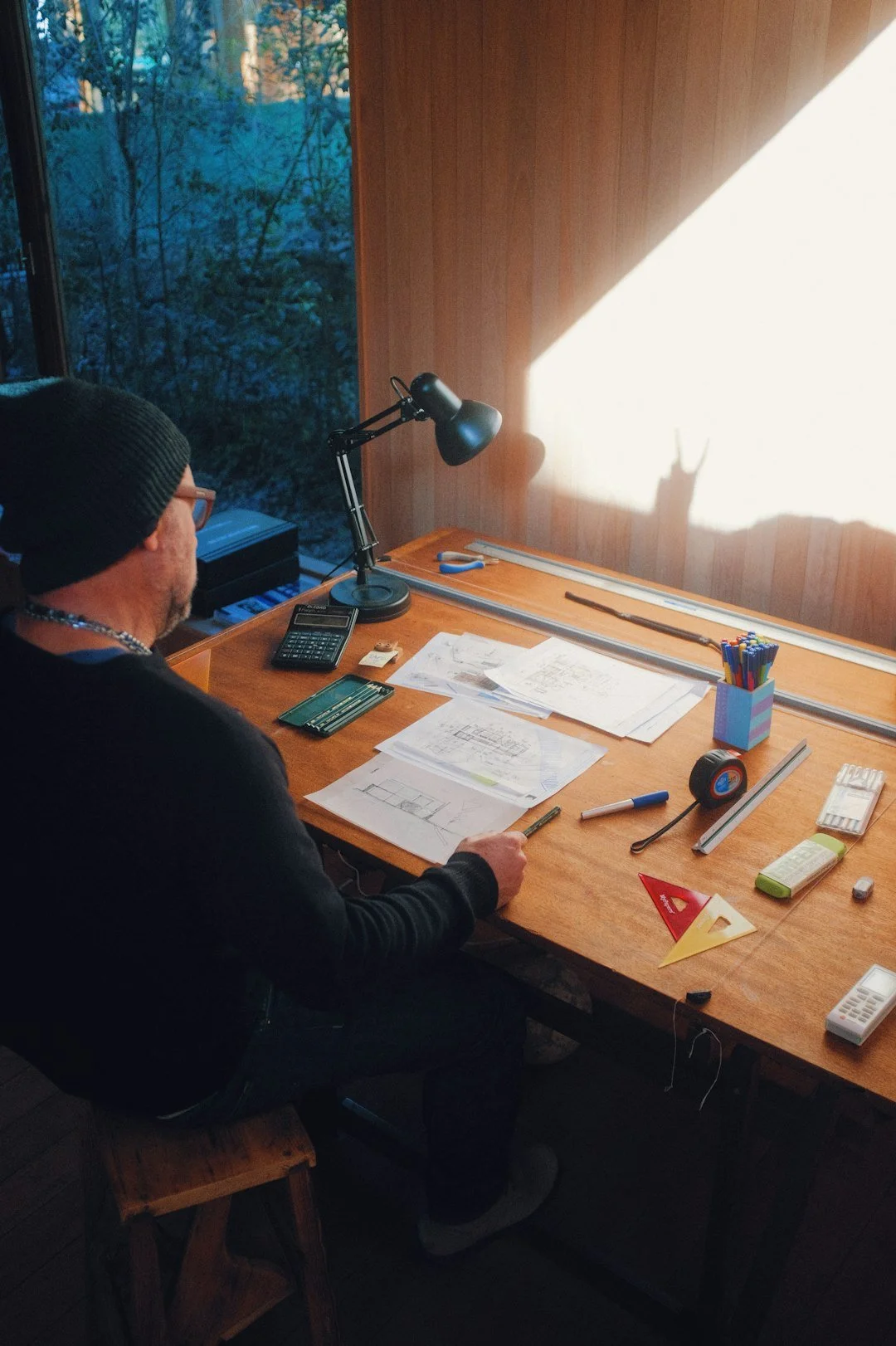Navigating London’s Complex Property Development Market: Guide to Successful Planning Applications
London, with its iconic skyline and diverse neighbourhoods, is a prime location for property development. However, developing property in London comes with its own set of challenges, particularly when it comes to navigating the intricate planning application process. Whether you're a seasoned developer or a first-time investor, understanding the nuances of London's property development landscape is crucial for success. In this guide, we'll walk you through key aspects of property development, and provide actionable insights to help you achieve successful planning applications in London.
by Eren Demir (https://unsplash.com/@erend0)
Understanding the Property Development Landscape in London
London is a vibrant city that offers a plethora of opportunities for property developers. The city's property market is one of the most dynamic in the world, with a constant demand for residential, commercial, and mixed-use developments.
However, this demand also means that the planning process is highly competitive and regulated.
The Role of Local Authorities
Local authorities in London play a significant role in the planning application process. Each of London's 32 boroughs has its own planning department responsible for reviewing and approving development proposals. Understanding the specific requirements and policies of the borough where you plan to develop is crucial. These policies can include local planning rules, conservation areas, and community infrastructure levies, among others. Additionally, boroughs may have unique priorities or objectives that developers must align with, such as enhancing green spaces or promoting affordable housing.
Navigating Local Planning Rules
Local planning rules in London dictate how land can be used and what type of structures can be built. It's essential for developers to familiarise themselves with the local planning restrictions of their targeted area.
Planning regulations can vary significantly between boroughs, with some areas strictly residential and others allowing for a mix of commercial and residential development. Developers should also be aware of any planned future changes to planning laws that could impact their projects.
Understanding Conservation Areas and Heritage Sites
London is a city rich in history, and many areas are designated as conservation areas to protect their architectural and historical significance. Developing in these areas requires careful consideration of design and materials to ensure they complement the existing character. Moreover, developments near listed buildings or heritage sites face additional scrutiny to preserve the cultural heritage of the area. Developers must work closely with local authorities to ensure compliance with these regulations.
The Impact of Community Infrastructure Levies (CIL)
Community Infrastructure Levies (CIL) are charges levied on new developments to help fund local infrastructure projects. These can include schools, transport improvements, and parks. Understanding the CIL charges applicable in the borough of your development is crucial for financial planning. It's important to note that CIL rates can vary significantly between boroughs and can impact the overall cost and viability of a project.
Key Considerations for Developers
Before you even begin the planning application process, there are several key considerations to bear in mind:
Location: The Cornerstone of Development Success
The location of your development can significantly impact its success. Consider factors such as accessibility, local facilities, and the demographic profile of the area.
Proximity to public transport links, schools, and commercial centres can enhance the attractiveness of your development to potential buyers or tenants. Additionally, understanding the cultural and social fabric of the neighbourhood can help tailor the development to meet the needs and preferences of the local community.
Conducting Thorough Market Research
Market research is an essential step in the development process. Conduct comprehensive research to understand the demand for the type of property you intend to develop. This includes analysing trends in the London property market and identifying potential competitors. Look for patterns in property prices, rental yields, and occupancy rates to gauge the viability of your project. Engaging with local estate agents and market analysts can provide valuable insights and data.
Financial Planning and Budgeting
Develop a comprehensive financial plan that includes budgeting for the cost of land acquisition, construction, and potential delays in the planning procedure. Take into account the impact of CIL charges and other fees associated with the development. It's also important to factor in potential fluctuations in construction costs and market conditions. Securing finance early in the process and having contingency plans in place can help mitigate financial risks and ensure the project's success.
Navigating the Planning Application Procedure
by Ryan Ancill (https://unsplash.com/@ryanancill)
The planning application procedure in London can be complex and time-consuming. However, with the right approach, you can increase your chances of approval. Here are the key steps involved:
Pre-Application Consultation: Engaging with Authorities Early
Engaging in a pre-application consultation with the local planning authority can be invaluable.
This process allows you to receive feedback on your proposal before formally submitting your application. It also helps you identify any potential issues that could arise during the formal application process. Establishing a collaborative relationship with the planning authority from the outset can facilitate smoother negotiations and increase the likelihood of approval.
Preparing a Comprehensive Application
Your planning application should be comprehensive and well-documented. Key components include:
Design and Access Statement: This document outlines the design principles of your development and how it will be accessible to all. It should demonstrate how the development fits within the context of the surrounding area and addresses any specific planning policies of the borough.
Environmental Impact Assessment: Depending on the scale of your project, you may need to conduct an environmental impact assessment to evaluate how your development will affect the surrounding environment. This assessment should consider factors such as noise, air quality, and biodiversity.
Architectural Plans: Detailed architectural plans are essential for communicating the vision of your development to the planning authority. These should include elevations, floor plans, and site layouts, along with descriptions of materials and finishes.
Submitting Your Application: The Review Process
Once your application is ready, you'll need to submit it to the relevant local planning authority. Be prepared for a waiting period, as the review process can take several weeks or even months. During this time, the planning authority will consult with various stakeholders, including local residents and environmental agencies.
It's important to maintain open communication with the planning authority and be responsive to any requests for additional information.
Addressing Objections and Appeals: Navigating Community Concerns
It's not uncommon for planning applications to encounter objections from local residents or other stakeholders. If this happens, be prepared to engage in negotiations and make necessary amendments to your proposal. Addressing community concerns early and effectively can often lead to a more favourable outcome. In some instances, you may need to appeal the decision if your application is initially refused. Understanding the appeals process and preparing a robust case can be crucial for reversing a negative decision.
Leveraging Expert Resources
by Tim Gouw (https://unsplash.com/@punttim)
Navigating London's property development landscape can be challenging, but you don't have to do it on your own.
Leveraging expert resources can significantly enhance your chances of success.
Hiring a Planning Consultant: Expert Guidance
A planning consultant can provide valuable insights and guidance throughout the planning application process. They have a deep understanding of local planning policies and can help you navigate potential pitfalls. Consultants can also assist with preparing documentation, liaising with authorities, and representing your interests during negotiations. Their expertise can be instrumental in streamlining the application process and achieving a favourable outcome.
Collaborating with Architects and Engineers: Building a Strong Team
Working with experienced architects and engineers is essential for creating a development that meets both aesthetic and functional requirements. Their expertise can also be instrumental in addressing technical aspects of the planning application.
Architects can help design a development that harmonises with its surroundings, while engineers ensure the structural integrity and sustainability of the project. A collaborative approach can lead to innovative solutions and a more successful development.
Engaging with Community Stakeholders: Building Support
Building positive relationships with community stakeholders can be advantageous for gaining support for your development. Engage with local residents, businesses, and community groups to address their concerns and demonstrate the value your development will bring to the area. Hosting community meetings, workshops, and open days can provide opportunities for dialogue and foster goodwill. Showing a genuine commitment to the community's needs can help mitigate opposition and build a robust foundation of support.
Conclusion
Developing property in London is a rewarding endeavour, but it requires careful planning and strategic execution.
By grasping the intricacies of the planning application process and harnessing expert resources, you can successfully navigate London's complex property development landscape. Keep these insights in mind as you embark on your next development project and increase your chances of achieving planning approval.
With determination and the correct approach, your vision for developing in one of the world's most iconic cities can become a reality. By aligning your project with local priorities, engaging with stakeholders, and assembling a skilled team, you can create a development that not only meets your targets but also enriches the fabric of London.
Speak to an Expert


